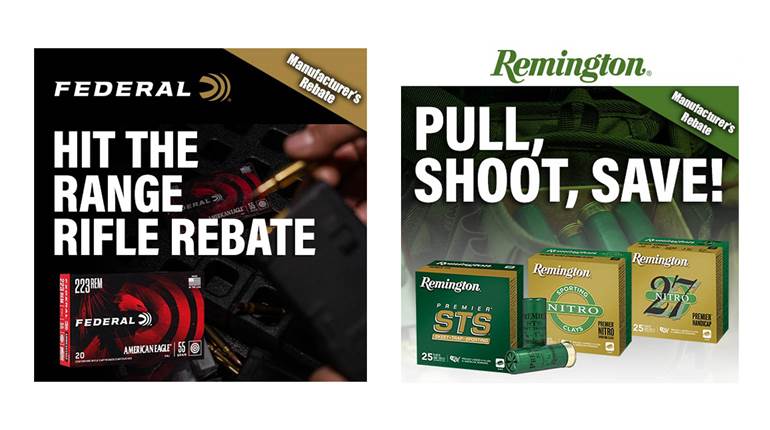
Simply stated, firearms are tools—regardless of how ornate they are. Be it used for hunting, competition, protection or casual plinking, firearms are a means to an end. And, as with other tools, firearms require routine maintenance to increase their longevity and reliability. So, too, can they be upgraded, which brings me to the intent of this article: 10 must-have basic tools for your ’smithing bench.
In the subsequent sections I identify 10 indispensable, basic tools—not items—for your selected workplace. It should go without saying that the work area should be a dedicated space set aside for the sole purpose of firearm maintenance and improvements; as such, common areas such as a kitchen table are off-limits. I purchased a solid wood desk—kept away from high traffic areas—from a thrift store for the princely sum of $25 for just this purpose. Equipping it, however, isn’t so straightforward, and narrowing the list further complicates the manner. Still, I persevered. What’s not included in the following list are non-tool items that must be had as well, including: protective, disposable gloves; thread-locking compound; a cleaning mat; cotton swabs, and an assortment of patches and gun cleaning/maintenance liquids, to name a few. We’ll focus on tools here. In no specific order, here they are.
Gun Vise
Firearms upkeep and improvement are exponentially more difficult without the aid of a quality, well-designed gun vise. Top-end models enable the user to make the adjustments necessary to secure nigh all long guns for damage-free cleaning—think rifled barrels—and adding an accessory and/or optic/bore sighting. It’s paramount for the latter. Gun vises are available from Real Avid, Tipton, MTM, HySkore, Birchwood Casey, Hoppe’s, and CTK Precision.
 Image courtesy of RealAvid.com.
Image courtesy of RealAvid.com.
My favorite is the Master Gun Workstation from Real Avid. Far-ranging adjustments ensuring a perfect fit can be made one-handed, and there is ample storage for parts, cleaning chemicals, jags, and brushes. It even has an oil resistant metal parts tray and tool storage, and magnetized holes prevent the loss of small firearm parts. Regardless of what brand and model you select, buy quality; a gun vise is an important investment.
Screwdriver Set
Having a quality screwdriver set is a must. And price begets excellence; don’t “cheap out,” as inexpensive screwdrivers seldom offer proper fit due to lackluster machining. This is especially problematic on high-grade shotguns, which require atypically sharp blades. Without a proper fit, damage to a costly, prized gun is likely. Additionally, look for heat-treated steel blades, a magnetic tip, which helps minimize the loss of small screws, and a comfortable, yet secure, grip.
 Image courtesy of Brownells.com.
Image courtesy of Brownells.com.
For an American-made set of basic sizes, look at CHANNELLOCK; Grace USA and Forster domestically manufacture a wider variety of sizes, including a micro set. Those looking for more diversity will find it in screwdriver sets with bits in various sizes and configurations. Brownells, Wheeler Engineering, Real Avid and Birchwood Casey have options. Conversely, the former has sets for specific firearm brands and/or models, such as the M1911, Colt Single Actions (and clones), Glock, Smith & Wesson, etc.
Torque Wrench
Many screws on firearms have prescribed torque settings to ensure proper snugness without stripping or breaking them—not guesstimating or giving it the He-Man heave-ho. To confirm that you’re meeting factory specifications, you’ll need a torque wrench measured in inch-pounds (in.-lbs.). Some, like the Wheeler Engineering F.A.T. Wrench, Lyman Pro Drive, and Fix It Stix All-In-One, are adjustable as low as 15 in.-lbs., and the former goes as high as 100 in.-lbs.

The others adjust to 80 and 65 in.-lbs., respectively. Brownells’ Magna-Tip Adjustable Torque Wrench nearly splits the difference at 70 in.-lbs. For those who want a specific setting, such as 25 in.-lbs. (for rings), you can purchase the Warne Mfg. Scope Ring Torque Wrench. I prefer it and the Wheeler Engineering F.A.T. Wrench. Wheeler Engineering’s F.A.T. Stix Preset Torque Wrench Set has torque limiters in 15, 25, 35, 45, and 65 in.-lbs., as well as 12 bit sizes and a T-handle driver, among other items.
Boresighter
If you’re an aspiring rifleman, you’ll eventually mount a riflescope. There’s no need to rely on others (i.e. gunsmith) to do so. Besides needing a gun vice and torque wrench, you’ll also need a boresighter. Essentially, boresighting reduces the amount of time and ammunition necessary to zero your rifle; when bore sighted properly, a quality rifle and optic correctly adjoined can be fine-tuned with only a few shots.

Boresighting devices vary in design, but the end result is the same. My favored device is the Bushnell Professional Boresighter, which retails for less than $100. Essentially, you select and install the correct arbor (provided), then tighten once in the barrel and make the appropriate scope adjustments. Simple. Fast. Accurate. A similar item is available from Barska, and boresighters using lasers can be had from LaserLyte, Firefield, Sightmark, Wheeler Engineering, Bushnell, Site-Lite, and Real Avid.
Scope-Leveling Device
While you’re purchasing a boresighter, add to the cart an optic leveling unit/kit to confirm your reticle isn’t canted. Devices, such as Wheeler Engineering’s Level-Level-Level, Fix It Stix’s Bubble Level Kit and Starrett Pocket Level, are inexpensive and use a small bubble level—think carpentry—to guarantee that the optic is level.
 Image courtesy of Fix-It-Sticks.
Image courtesy of Fix-It-Sticks.
Why does it matter? Consider the effect of cant when making scope adjustments or on elevation holds. Yeah, it matters.
Hook & Pick Set
This one isn’t likely to make the cut for many round-up-type articles, but the value of such set cannot be underestimated. As an example, this past spring, I bagged a boisterous Virginia long beard after weeks of playing cat and mouse. While the first shell in an Benelli SBE 2 performed admirably, had it not, there’d been no second shot; in the process of loading the second shell, the polymer overshot disc shattered and spread copious amounts of buffer and No. 7 TSS throughout the action, effectively rendering the shotgun inoperable.

The resultant mess took hours to clean, and it was only with the help of a four-piece, American-made CHANNELLOCK Hook & Pick set that I thoroughly cleaned all nooks and crannies. I’ve since found them helpful for cleaning anywhere that’s typically missed by brushes, swabs and patches. In fact, I couldn’t be without them. The set includes: 180-degree full hook; straight pick; 90-degree pick; and complex probe.
Cleaning Rod(s)
Sure, some firearms have the uncanny ability to operate when unbelievably dirty, but it’s bad for them, and they will, in time, fail at an inopportune moment. Not to mention, accuracy will degrade with a dirty bore. While pull-through-type cleaning kits are fine for expedient cleaning afield, or while traveling, they’re not the equal of a quality cleaning rod with properly fitting accoutrements. But, not all cleaning rods are the same. Ideally, you want a one-piece rod constructed of brass, though carbon-fiber, or one from steel or an alloy having a chemical-resistant, non-bedding coating, will work, too.

Why one piece? Cleaning rods with multiple sections tend to flex under pressure, which is less than desirable. Additionally, the handle should have bearings so that the rod rotates while traversing the bore. Cleaning rods can be caliber specific or work within a range of calibers, such as 0.22-0.264”. Top-tier cleaning rods can be had from Montana X-Treme, Bore Tech, J. Dewey Mfg. Co., Inc., Breakthrough Clean Technologies, Tipton, Birchwood Casey, KleenBore, Hoppe’s and Eastern Maine Shooting Supplies, Inc. It’s also advisable to use a bore guide to prevent damage to the rifling.
Jags And Bore Brushes
Naturally, you’ll need jags and brushes to tip your cleaning rod(s). Opinions abound in terms of the materials that they're constructed with, but I favor brass jags and traditional copper-bristled brushes; however, I replace the latter frequently, as harsh(er) cleaning chemicals tend degrade them quickly. You can purchase these individually or as a set.

As a writer, I evaluate a lot of calibers and gauges, so it makes sense to purchase a set; if you own few firearms, though, jags and bore brushes in that (or those) calibers/gauges would be the prudent decision. Some of the best options come from: Pro-Shot; Bore Tech; Montana X-Treme; Eastern Maine Shooting Supplies; J Dewey; and Tipton.
Ultrasonic Cleaner
A tool—electronic, in this case—that is indispensable to me come muzzleloader season or when tackling especially tough carbon/fouling is an ultrasonic cleaner. Using an ultrasonic cleaning action, the units reduce scrubbing time drastically—especially on breech plugs. It’s truly “set and forget” until the timer reaches zero. What’s more, the same devices can be used to clean brass for reloading.
 Image courtesy of lymanproducts.com.
Image courtesy of lymanproducts.com.
Although my Hornady ultrasonic cleaner has been long discontinued, other great options are available from Lyman and Infante Ultrasonics. Sizes vary, ranging from those that hold handguns up to some that will accommodate full AR uppers. If you shoot a lot, consider investing in one.
Gun/Brand-Specific Tools
Okay, this is cheating a bit, but hear me out. There are specialized tools that are handy, if not essential, for the maintenance and enhancement of specific firearms, such as Glocks, M1911s, SIG Sauers, and ARs, to name but a few. So, if you have a brand/model for which such tool(s) exist, you might consider it/them. Even if they’re not essential, they’ll probably save time and grief. Depending on the firearm, look into: AR-Stoner; Real Avid; TruGlo; Glock; Wheeler Engineering; Magpul; Midwest Industries, Inc.; Birchwood Casey; HIVIZ Shooting Systems; Wilson Combat; GTUL; and Mounting Solutions Plus, among others. YouTube videos, blogs, and websites dedicated to specific brands and/or models are good places to find recommendations about specific tools.
Setting up a proper ’smithing workbench doesn’t have to be onerous or time-consuming. By adding those tools outlined in this article, you’ll be equipped to handle the majority of maintenance and tinkering tasks you encounter.





































